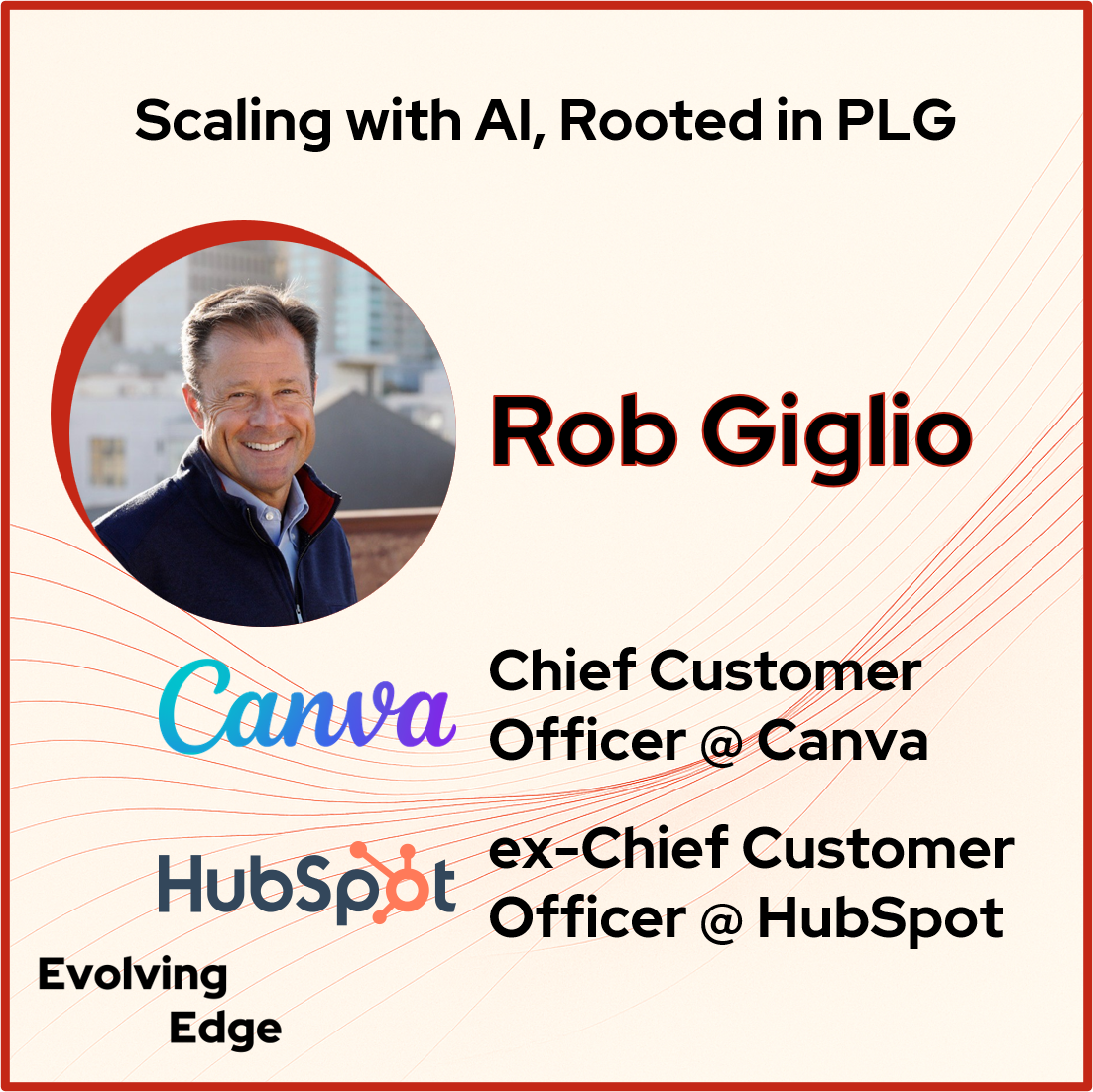Scaling with AI, Rooted in PLG: Rob (Canva)
Chief Customer Officer @ Canva; ex-Chief Customer Officer @ Hubspot
With over 240M MAU and ARR growing to US$3.3B, Canva has become one of the most iconic design platforms globally. Chief Customer Officer, Rob Giglio, is scaling Canva's GTM machine by layering an enterprise engine onto its PLG foundation - all while embracing AI to further democratize design.
In this conversation, Rob unpacks how that transformation is unfolding - from his path to Canva to the inner workings of feedback loops, PLG evolution, and embedding AI into the creative experience.
Q: You didn’t join Canva immediately after meeting Cliff, Co-Founder of Canva. What happened?
Rob: I first met Cliff in late 2020. We had a great chat about go-to-market challenges in selling to businesses.
We spoke again briefly in 2021. Then in 2023, I got a text from an unknown number: "Hey, it’s Cliff. Can we chat?" I had to double-check who it was!
At the time, I was loving my role at HubSpot. But Cliff framed the opportunity in a way that was compelling not because of financials, but because of mission. Canva was at an inflection point. They needed someone who had seen what great looked like, but who wasn’t wedded to repeating the same old playbook.
He wanted a partner to co-create a new GTM engine for taking Canva into the workplace. I said yes and I am so glad I did because working with him directly and the great folks we have at Canva has been incredible.
Q: Let’s talk customer feedback. What does an effective loop look like between sales and product?
Rob: It starts with a mental model. At Canva, we use something called "The Bowtie", named for its shape - wide at both ends and narrow in the middle. It reflects the journey from broad top-of-funnel awareness, narrowing through conversion, and expanding again through customer success and advocacy. The Bowtie maps the full customer journey:
Each phase has measurable signals. For example, are we creating awareness? Are users adopting quickly? If we see drop-offs, we investigate what’s creating friction.
Second, there’s full commitment across GTM and product to improve the journey. It’s not just sales shouting at product. Everyone's responsible for unblocking the flow.
We quantify this in two ways:
Closing the Loop system: Every year, Canva receives millions of user suggestions. We route them into a structured system, tag them by priority, and allocate engineering capacity to respond. When a loop is closed, we notify the user directly. It blows people’s minds.
Voice of Sales via third-party tooling: Sales calls surface objections or missing features. "I'd buy if you supported this integration." We log the frequency and revenue potential. That goes straight to product.
This eliminates conflict. It’s not subjective. It’s measurable. And product teams are actively listening - especially as we expand into enterprise where needs are more complex.
Q: Canva started as a PLG rocket ship. How has that evolved?
Rob: The core of Canva's growth is still organic. But it's not PLG in the typical "try-and-buy" sense.
Most PLG companies target a persona, get them to try the product, and convert them. Canva is more network-driven:
Anyone can use it.
They invite collaborators.
Usage spreads naturally inside teams and organizations.
Collaboration fuels growth. That’s the multiplier.
What’s changed is we now layer a sales motion on top. When a company has 500 or 1,000 users, someone from procurement eventually calls us: "What is Canva, and why are we paying for so many licenses?"
Sometimes, we proactively identify large usage clusters and reach out to consolidate into enterprise deals. It’s very similar to what Dropbox or DocuSign did.
So PLG is still our base motion. But now we have:
Inbound sales triggered by user footprint
Proactive outbound based on usage signals
Account management for large teams and departments
Q: Everyone's talking about AI. What does it mean for Canva?
Rob: If Canva was known for democratizing design, our next act is democratizing AI.
That doesn’t mean building the most powerful model. It means embedding AI in everyday workflows so users don’t have to hop between tools.
Take image generation, for example. Most AI tools today require you to:
Prompt an image
Export it
Edit elsewhere
Upload it to another tool
Then publish it
That’s digital hopscotch.
What we’re doing at Canva is collapsing that entire chain. We embed AI inside our platform:
Easy to use
Context-aware
Publish-ready
We already have the distribution: 240M monthly users. It’s easier to bring AI to them than ask them to leave Canva and come back.
Q: Sounds like distribution > models?
Rob: 100%. Models are commoditizing. The real battleground is UX and distribution. Whoever embeds AI seamlessly into user flows will win. It's not about building the flashiest model - it's about removing friction for users. Embedding AI directly into familiar workflows allows users to stay in one tool, get more done, and realize value faster. That’s where Canva focuses: making AI invisible, intuitive, and native to the design process.
Q: You shared a metaphor about shampoo…what can consumer packaged goods teach us about GTM strategy?
Rob: Let me give you a metaphor.
I spent a decade in consumer packaged goods, selling literal commodities. Razor-thin margins. So how do you compete?
Brand
Distribution expansion
That’s where "2-in-1 shampoo" came from. You take shampoo, add conditioner, and boom - you’ve just solved two problems in one bottle.
That’s what Canva is doing. We already have the platform (shampoo). Now we’re adding AI (conditioner). We’re not forcing people to find another tool. We’re solving the full use case in one experience.





